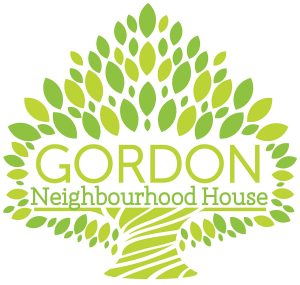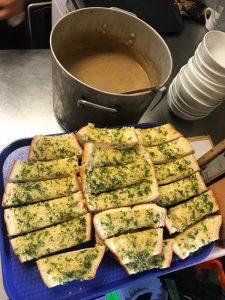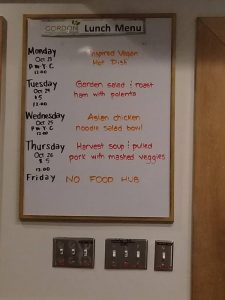“Saying goodbye doesn’t mean anything. It’s the time we spent together that matters.”
– Trey Parker



Photo Credit, Photo Credit, Photo Credit
Hello everyone! Welcome to our last blog post of the year, which unfortunately means our community project is coming to an end. There has been many ups and downs during our project but we finally made it! In our last blog, we will outline a moment of significance that occurred while we tried to finish our project. A moment where we had to rethink and adjust our plans, even near the end of our project. We will also inform you guys all about the limitations and results of our work and say our farewells!
A Hiccup Near The End :O
What
In our final weeks of our project, we finished our data analysis on all six menus provided by Gordon Neighbourhood House (GNH). While we were trying to analyze the results, we realized there wasn’t as much information as we anticipated at the beginning of the project, which made the assessments have limitations. First of all, the menus provided were not exact measurements of the ingredients used in the recipes. Moreover, some of the ingredients were added depending on how much or how little the guests wanted to add. These uncertainties make the process of analysis more difficult (Bradac, 2001). Additionally, serving sizes vary and it was difficult for us to accurately convert them into exact numbers. We had to ask ourselves many questions while inputting our data, such as how we would convert three heads of broccoli into cups/grams? Lastly, lack of recipes made our results less representative. Because the community partners were busy and they only had a few recipes at hand, we were only able to analyze five of the Wednesday lunch recipes and one Tuesday recipe, which means the results may be skewed. Monday, most Tuesday, and Thursday recipes, which often include meat, were not included. The Wednesday lunches we analyzed are “Pay What You Can” and are usually vegetarian meals, so it was not much of a surprise to us that they were limited in protein and the essential vitamins and minerals associated with meat. On top of all of this, our initial idea to analyze the results to Recommended Daily Allowances (RDA) by Health Canada, was not ideal because we only collected data for lunches which is not representative of a full day of eating.
So What
As you can see, we encountered many difficult problems even near the end of our project. There were problems that were not foreseen and made us reconsider many of the ideas and effort we put into our community project. We had developed more uncertainties, making us feel uncomfortable and wary of our work (Bradac, 2001). Yet, we persisted on and came up with ways to reduce our uncertainties and make things more predictable because naturally, as human beings, we appreciate the expected (Bradac, 2001). A solution we came up with when it came to varying portion sizes was to estimate how much each ingredient was added to the recipe. However, doing so lowered the accuracy of our assessment. To address the issue of how the recipes only represented lunches, we came to a decision to divide the RDAs by three and determine the lacking nutrients based on how little the nutrients met one-third of the RDAs. We concluded that we cannot assume that the GNH lunches are representative of all the meals the guests eat in a day. Therefore, in our report, we only note that since a majority of the GNH meals are lower in a specific nutrient, seniors must compensate for these nutrients in other meals. As for the lack of recipes from other days of the week, we determined that there was not much we could do and noted the limitation in our results. Since we understand that our results are not as detailed as we had imagined, our results may not be as accurate as we hoped.
Now What
We’ve come to terms with our obstacles and our group has been very optimistic. Throughout the term as a team, we learned to adapt to new situations and noticed that we cannot always achieve everything that we want, even though we have put in all our effort. The key point is to understand that flaws and imperfections are only opportunities for us to learn and improve for the future. There will always be barriers and limitations in whatever work we do. And so, we have listed a few limitations that can be turned into a list of suggestions for the next LFS 350 group that continues to investigate our project. Now, as we move forward our objective is to end this semester on a high note. We have decided to have a tighter and reinforced schedule that will allow us to meet all of our final deadlines. As a team, we have created a to-do list for each member to keep track of our individual duties. New methods of interaction have been introduced which include on-campus meetings and group Skype calls.
Even after the many issues we encountered, we were able to provide a list of worrisome nutrients and a few suggestions for our stakeholders to implement. The RDAs of concern were vitamin D, calcium, vitamin B12, thiamin, riboflavin, folate, vitamin B6, vitamin K, protein, and sodium was a little high. We suggested that some food items such as pork, tofu, kale, nutritional yeast, and dairy products should be included in meals to increase the amounts of the nutrients of concern in the lunches served at GNH.



In order: photo of garlic bread and soup, list of meals during the week, preparation of food
Photos were taken at GNH by us
Here is the end! Thank you for following us throughout our journey and reading about our escapade. Hopefully, we have sparked enough interest in some of our readers to be a part of their own community projects because it is a challenging but rewarding thing to do! Although our project and classes have ended, our interests in nutrition and health have not. We will continue to study and hopefully have more opportunities to do nutritional assessments on those who need/want them. Thank you to our instructors, professors, and community stakeholders for allowing us to be part of such a collaborative and enjoyable project!
References:
Bradac, J. (2001). Theory comparison: Uncertainty reduction, problematic integration, uncertainty management, and other curious constructs. Journal of Communication, 51(3), 456-476. doi:10.1093/joc/51.3.456
